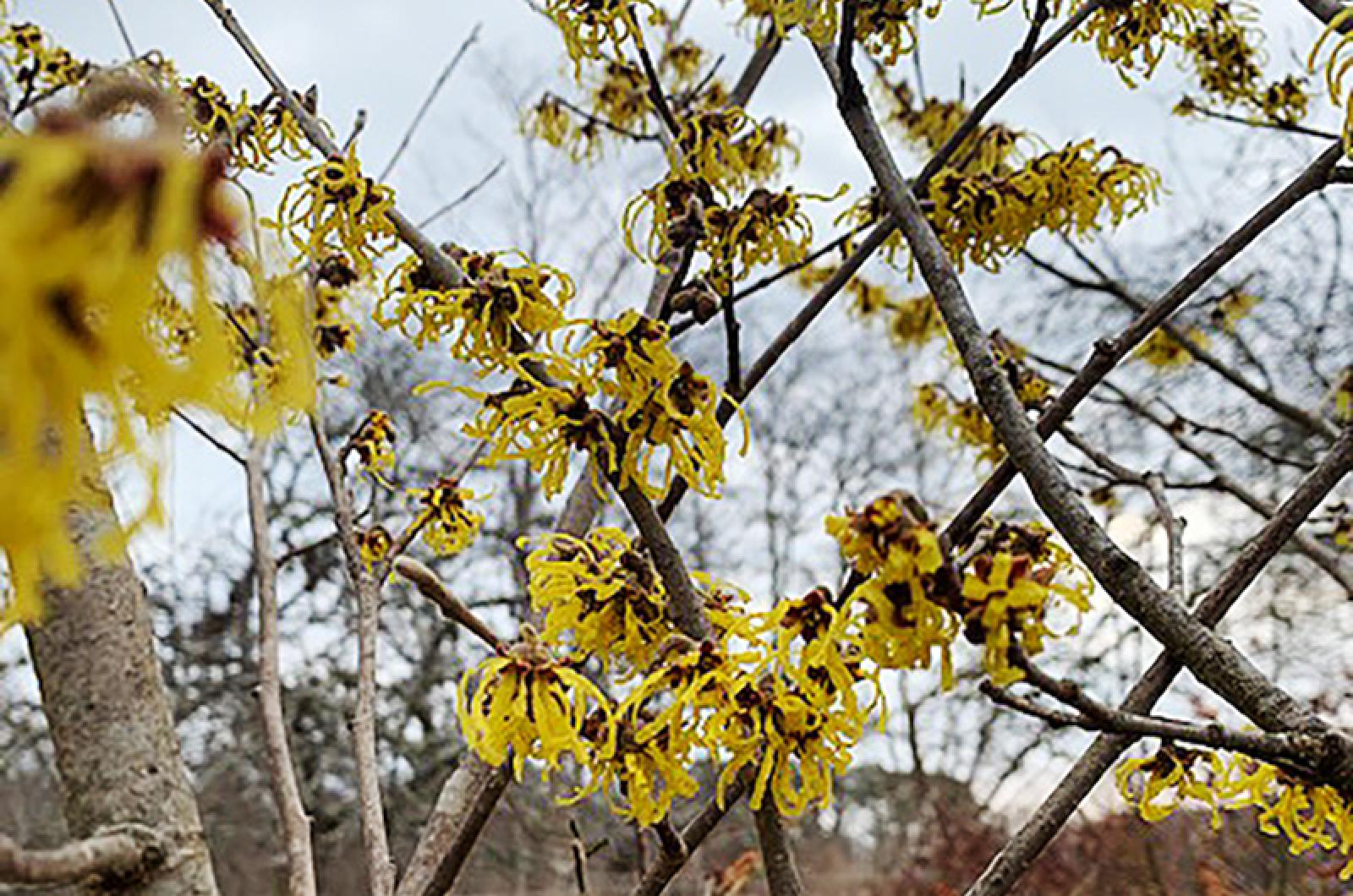Dr. Alvin F Whittemore of Essex, Connecticut, suspected that alcohol was the answer. No, he wasn’t a drunk or even just looking to drown his sorrows, but he had found something to soothe his nerves and was hoping to find a way to preserve it. Dr. Whittemore was simply (and literally) searching for a solution — one that could extend the shelf life of a common herbal remedy.
As the owner of the town drug store, and longest-serving postmaster of Essex (1825-1850), he had a whole lot of potential customers and knew the power of a common and plentiful plant found in the woods and yards of his neighbors. Dr. Whittemore is credited with adding alcohol to preserve witch hazel, giving this local herbal remedy commercial possibilities.
Indigenous people were the first to discover its benefits and employ this plant as medicine. Witch hazel has long been known for its cure-all properties. It really seems to do it all — both internally and externally.
Witch hazel can alleviate skin ailments, heal mouth infections, soothe hemorrhoids and muscle aches, beat back inflammation, slay coughs, colds and dysentery, and solve many other health complaints. It is even Food and Drug Administration (FDA)-approved in some cases.
Though Dr. Whittemore commercialized his witch hazel product, he never quite elevated it to its fullest potential. That was for Rev. Thomas Newton Dickinson to accomplish. Dickinson was a man with a plan.
A true entrepreneur, he founded a lucrative business supplying uniforms to troops during the Civil War. However, once the war ended, he needed a new commercial venture. Seeing Dr. Whittemore’s success, Reverend Dickinson consolidated his predecessor’s and other small witch hazel producers efforts and, in 1870, opened up the first commercial distillery to bottle and distribute this miracle product.
By 1875, Dickinson had five facilities in operation and had begun to spread the gospel of witch hazel far and wide. His son, Edmund, took over the business, which at the time produced half the world’s supply. Two more generations of Edmunds followed in their father’s footsteps, increasing the business through what would eventually be four generations of witch hazel wizards. Relatives eventually sold the business outside of the family in 1983. The company, now called Dickinson’s (though it wasn’t always), produces more than two million gallons per year of this good, health-bringing stuff.
Don’t fear its use despite its devilish name, which in fact speaks not to sorcery but to its use as a diving rod for finding water (known as water witching). Witch is derived from wych (bendable) or wicke (lively), describing the supposed actions of the plant’s twig when it finds groundwater. Hazel refers to its resemblance to the plant that produces hazelnuts. Witches and other healers have used it for traditional and nontraditional means, suggesting that in addition to its benefits to the body, it also serves the spirit — keeping away evil and mending broken hearts.
Wondrous witch hazel is cause for celebration now more than ever, as it is blooming with slender yellow-petalled flowers, giving a pretty pop of color in the drab grey winter landscape. Go on your own witch hunt to find this golden treasure and make your own mixture of medicine that could help us spring to life and to health.
Suzan Bellincampi is director of the Felix Neck Wildlife Sanctuary in Edgartown, and author of Martha’s Vineyard: A Field Guide to Island Nature and The Nature of Martha’s Vineyard.







Comments
Comment policy »